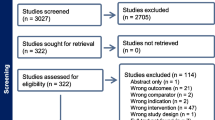Abstract
Purpose of Review
Approximately 20% of patients undergoing surgery develop persistent lower extremity pain following total knee arthroplasty. Animal studies have confirmed that prolonged tourniquet time increases the risk of endoneural ischemia and can mediate or modulate the development of chronic pain. The use of Near InfraRed Spectroscopy (NIRS) adjacent to nerve tissue, previously described as ONG has been shown to detect early neural compromise and has demonstrated clinical utility in carpal tunnel diagnosis.
Recent Findings
In this pilot study, we recruited 10 healthy adult volunteers to undergo oxyneurography (ONG) and sensory nerve conduction testing (sNCT). We performed testing on the upper and lower extremities in each individual. The tourniquet was applied followed by measurements of sNCT and ONG as described. We observed a significant drop in the mean ONG index at 3 and 5 min following tourniquet inflation in upper and lower extremities. Similar to raw ONG values, there was significant variability in sNCT measurements, which in general increased from baseline with tourniquet inflation. In the upper extremity, there was a significant increase in sNCT with tourniquet inflation, while in the lower extremity, there was a trend towards significance.
Summary
The use of ONG can be supported as a diagnostic tool to detect nerve ischemia and to potentially reduce the incidence of tourniquet-mediated or -modulated neural ischemia and reduce the development of chronic post-tourniquet pain.




Similar content being viewed by others
References
Papers of particular interest, published recently, have been highlighted as: • Of importance •• Of major importance
• Guler O, Mahirogullari M, Isyar M, Piskin A, Yalcin S, Mutlu S, et al. Comparison of quadriceps muscle volume after unilateral total knee arthroplasty with and without tourniquet use. Knee Surg Sports Traumatol Arthrosc. 2016;24(8):2595–605. Investigators showed a decrease in the volume of quadriceps muscles with the use of tourniquet and subsequent decrease in functional outcomes questioning the routine use of tourniquets for knee surgeries.
Liu D, Graham D, Gillies K, Gillies RM. Effects of tourniquet use on quadriceps function and pain in total knee arthroplasty. Knee Surg Relat Res. 2014;26(4):207–13.
Ledin H, Aspenberg P, Good L. Tourniquet use in total knee replacement does not improve fixation, but appears to reduce final range of motion. Acta Orthop. 2012;83(5):499–503.
• Kwak KH, Han CG, Lee SH, Jeon Y, Park SS, Kim SO, et al. Reactive oxygen species in rats with chronic post-ischemia pain. Acta Anaesthesiologica Scandinavica. 2009;53(5):648–56. This manuscript highlights the importance of ischemia-induced neural damage by reactive oxygen species during tourniquet inflation and an attempt to reverse that effect with antioxidants. Allopurinal showed maximum reversal and prevention of chronic pain in animal models.
• Coderre TJ, Xanthos DN, Francis L, Bennett GJ. Chronic post-ischemia pain (CPIP): a novel animal model of complex regional pain syndrome-type I (CRPS-I; reflex sympathetic dystrophy) produced by prolonged hindpaw ischemia and reperfusion in the rat. Pain. 2004;112(1–2):94–105. Investigators demonstrated very early in 2004 that ischemia induced by tourniquet application can result in a chronic neuropathic pain state akin to Complex Regional Pain syndrome by generation of free radicals during ischemia-reperfusion state.
Khalil Z, Khodr B. A role for free radicals and nitric oxide in delayed recovery in aged rats with chronic constriction nerve injury. Free Radic Biol Med. 2001;31(4):430–9.
• Jabre JF, Squintani GM, Chui KK. Oxyneurography: a new technique for the measurement of nerve oxygenation. Muscle Nerve. 2012;45(1):75–80. These investigators coined the term oxyneurography, a technique that can be used for early detection of neural ischemia leading to neuropathy.
•• Shadgan B, Reid WD, Harris RL, Jafari S, Powers SK, O'Brien PJ. Hemodynamic and oxidative mechanisms of tourniquet-induced muscle injury: near-infrared spectroscopy for the orthopedics setting. J Biomed Opt. 2012;17(8):081408–1. To develop a predictive model of tourniquet associated oxidative injury, this study combined real time continuous wave NIRS with measurement of oxidative proteins non-invasively.
Hupalo M, Smigielski J, Fortuniak J, Jaskolski DJ. Value of oxyneurography, based on near infrared spectroscopy, in the diagnosis of carpal tunnel syndrome in comparison to provocative clinical diagnostic tests and nerve conduction studies. Clin Neurophysiol. 2018;129(1):327–32.
Kam PC, Kavanagh R, Yoong FF. The arterial tourniquet: pathophysiological consequences and anaesthetic implications. Anaesthesia. 2001;56(6):534–45.
Younger AS, Kalla TP, McEwen JA, Inkpen K. Survey of tourniquet use in orthopaedic foot and ankle surgery. Foot Ankle Int. 2005;26(3):208–17.
•• Dreyer HC. Tourniquet use during knee replacement surgery may contribute to muscle atrophy in older adults. Exerc Sport Sci Rev. 2016;44(2):61–70. This manuscript describes the hypothesis that muscle loss after total knee arthroplasty is related to ischemia-reperfusion injury induced by tourniquet.
Murphy CG, Winter DC, Bouchier-Hayes DJ. Tourniquet injuries: pathogenesis and modalities for attenuation. Acta Orthop Belg. 2005;71(6):635–45.
Author information
Authors and Affiliations
Corresponding author
Ethics declarations
Conflict of Interest
Srinivas Pyati, Julien Cobert, Joe F Jabre, James H. Diaz, and Karthik Raghunathan declare no conflict of interest.
Our manuscript discusses unlabeled/investigational use of Cerebral Oximeter (ORE-SIGHT® (Casmed, Branford, CT) device for the use of measuring nerve oxygenation solely for this study.
Alan Kaye is a Section Editor for Current Headache and Pain Reports. He has not been involved in the editorial handling of this manuscript. Dr. Kaye is also a speaker for Merck.
Human and Animal Rights and Informed Consent
This article does not contain any studies with human or animal subjects performed by any of the authors.
Additional information
Publisher’s Note
Springer Nature remains neutral with regard to jurisdictional claims in published maps and institutional affiliations.
This article is part of the Topical Collection on Other Pain
Rights and permissions
About this article
Cite this article
Pyati, S., Cobert, J., Jabre, J.F. et al. Effects of Tourniquets in the Development of Pain States: a Novel Clinical Pilot Study and Review of Utilization of Tissue Oximetry to Measure Neural Ischemia. Curr Pain Headache Rep 24, 25 (2020). https://doi.org/10.1007/s11916-020-00855-x
Published:
DOI: https://doi.org/10.1007/s11916-020-00855-x



